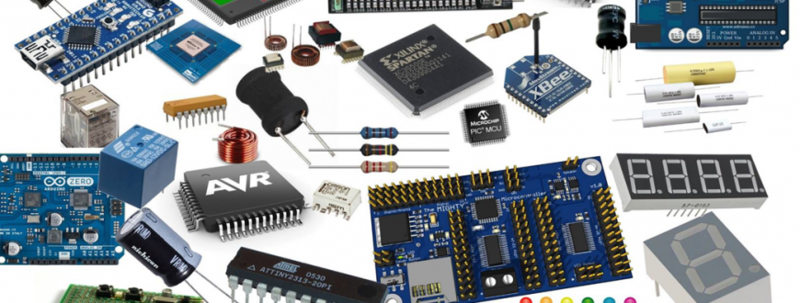
The Complete Guide to Component Selection for Electronic Design
Global electronic component supplier AMPHEO PTY LTD: Rich inventory for one-stop shopping. Inquire easily, and receive fast, customized solutions and quotes.
Choosing the right components is critical for the performance, reliability, and cost-effectiveness of any electronic design. This guide covers key considerations, methodologies, and best practices for selecting components in embedded systems, analog/digital circuits, and power electronics.

1. Understanding Design Requirements
Before selecting components, define the system requirements:
-
Functional Requirements (voltage, current, frequency, signal types)
-
Environmental Conditions (temperature, humidity, vibration)
-
Regulatory & Compliance Standards (RoHS, UL, CE, automotive-grade)
-
Cost & Availability (budget constraints, lead times, lifecycle status)
-
Size & Form Factor (PCB space, SMD vs. through-hole)
2. Key Component Categories & Selection Criteria
A. Microcontrollers (MCUs) & Processors
| Parameter | Considerations |
|---|---|
| Core Architecture | 8-bit (PIC, AVR), 16-bit (MSP430), 32-bit (ARM Cortex, RISC-V) |
| Clock Speed | Match processing needs (low power vs. high performance) |
| Memory (Flash/RAM) | Sufficient for firmware and data buffers |
| Peripherals | ADC, DAC, PWM, UART, I2C, SPI, USB, Ethernet |
| Power Consumption | Critical for battery-operated devices |
| Package Type | QFP, BGA, SOIC (pick based on assembly method) |
| Example Choices | STM32 (ARM), ESP32 (Wi-Fi/BLE), ATmega328P (Arduino) |
B. Passive Components (Resistors, Capacitors, Inductors)
| Component | Selection Factors |
|---|---|
| Resistors | Tolerance (1%, 5%), Power rating (1/4W, 1W), Type (Carbon, Metal Film) |
| Capacitors | Dielectric (Ceramic, Electrolytic, Tantalum), Voltage rating, ESR |
| Inductors | Current rating, inductance value, saturation current |
C. Semiconductors (Diodes, Transistors, MOSFETs)
| Type | Key Parameters |
|---|---|
| Diodes | Forward voltage (Schottky, Si), Reverse recovery time |
| BJTs | Current gain (hFE), Switching speed |
| MOSFETs | RDS(on), Gate charge, VGS threshold |
| Example | 1N4148 (signal diode), IRF540N (power MOSFET) |
D. Power Management (Voltage Regulators, Converters)
| Type | Selection Criteria |
|---|---|
| Linear (LDO) | Low noise, dropout voltage (e.g., LM1117) |
| Buck Converter | High efficiency, switching frequency (e.g., LM2596) |
| Boost Converter | Output voltage range (e.g., MT3608) |
E. Sensors & Actuators
| Sensor Type | Key Parameters |
|---|---|
| Temperature | Accuracy (±0.5°C), Interface (I2C, analog) |
| Accelerometer | Range (±2g, ±16g), Digital vs. Analog |
| Current Sensor | ACS712 (Hall-effect), INA219 (digital) |
F. Connectivity (Wireless & Wired)
| Protocol | Selection Factors |
|---|---|
| Wi-Fi | ESP8266, ESP32 (low-cost IoT) |
| Bluetooth | HC-05 (Classic), BLE (nRF52) |
| CAN Bus | MCP2515 (automotive/industrial) |
3. Component Selection Methodology
Step 1: Define Specifications
-
Input/output voltage/current ranges.
-
Signal frequency & noise immunity.
-
Operating temperature range.
Step 2: Research & Shortlist Components
-
Use distributor filters.
-
Check datasheets for critical parameters.
Step 3: Simulation & Prototyping
-
Use SPICE (LTspice, PSpice) for analog circuits.
-
Test with evaluation boards before finalizing.
Step 4: Availability & Supply Chain
-
Avoid obsolete parts (check lifecycle status).
-
Consider second sources (alternate manufacturers).
Step 5: Cost Optimization
-
Compare bulk pricing.
-
Balance performance vs. budget.
4. Avoiding Common Pitfalls
-
Over-specification: Don’t choose excessively high-rated parts if not needed.
-
Thermal Issues: Check power dissipation (heating in resistors/MOSFETs).
-
Signal Integrity: Ensure proper decoupling capacitors near ICs.
-
EMC/EMI Compliance: Use shielded inductors, ferrite beads if needed.
5. Tools for Component Selection
-
Octopart – Compare prices & availability.
-
SnapEDA – Find footprints & symbols.
-
LTspice – Simulate analog circuits.
-
JLCPCB SMT Assembly – Check part compatibility.
6. Final Checklist Before Ordering
✅ Verified datasheet specs match requirements.
✅ Confirmed footprint matches PCB design.
✅ Checked lead time & stock availability.
✅ Evaluated thermal & electrical derating.
✅ Ensured compliance with industry standards.
Conclusion
Smart component selection balances performance, cost, and reliability. By following a structured approach—defining requirements, researching alternatives, simulating, and verifying—you can optimize your design efficiently.
Related Articles
- ·What are the advantages and disadvantages of using SoCs in embedded systems?
- ·How to implement a multi class neural network with STM32F103?
- ·What are the differences between various Arduino boards?
- ·Comparison of ARM vs. RISC-V MCUs
- ·How to achieve serial communication between STM32 and ESP8266?
- ·DS18B20 Temperature Sensor Detailed Explanation and Use Cases
- ·How to deploy artificial intelligence algorithms on STM32?
- ·The Difference Between 8-bit, 16-bit, 32-bit, And 64-bit Microcontrollers
- ·STM32 PWM Principle and Application
- ·ESP32 vs Arduino, Compare their differences and use cases
